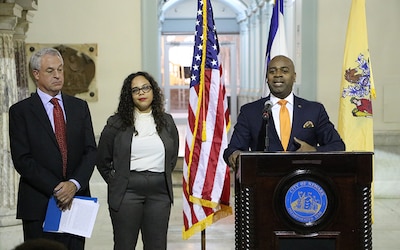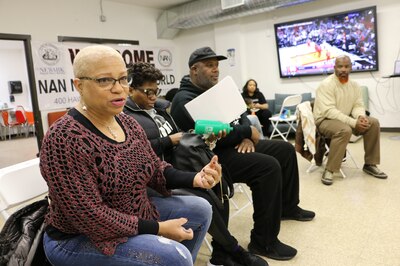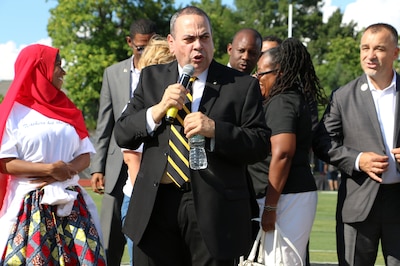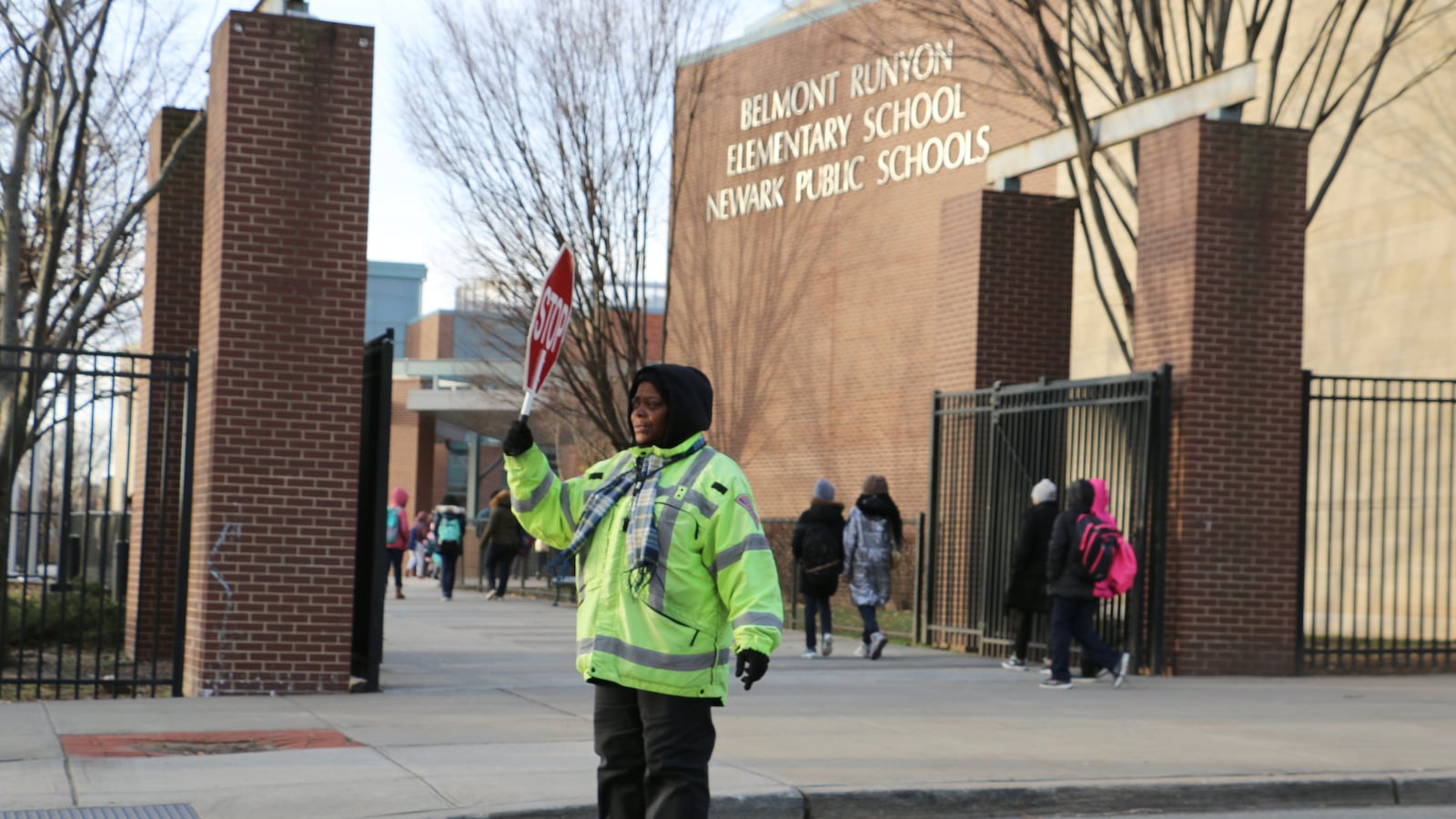Three years ago, Newark unveiled a high-profile experiment: Rather than close low-performing schools in the city’s impoverished South Ward, the district would try to revive them with an infusion of extra services and staffers.
It was a major victory for Mayor Ras Baraka, who convinced the district’s state-appointed superintendent to devote $10 million in private funds to the effort, and for local activists and teachers unions who had long endorsed this “community-school” approach — transforming schools into service-rich hubs able to treat the many ailments, from hunger to asthma to mental-health crises, that can impede some students’ learning.
Now, with the program still in its infancy, Newark’s new superintendent — a homegrown educator who is close to the mayor, the union, and those same activists — is declaring it a failure.
“I have zero student achievement. I have poor attendance. And I have a lot of people who are getting money in their wallets,” Superintendent Roger León said at last month’s board meeting, before promising big changes. “I assure you the city will see what a true community school is when we move forward in actually bringing one about.”
Beyond those remarks, León has not spoken publicly about the South Ward community schools effort or his plans for an alternative approach. He declined to be interviewed for this story.
But people who have spoken with the superintendent, including Baraka, say León is dismayed by the program’s uneven implementation and disappointing early results for students, which even some community-school supporters acknowledge. Those familiar with León’s thinking say he envisions a broader, citywide effort that draws from an earlier community-school program called the “Newark Global Village School Zone,” which a previous superintendent abruptly ended.
It could be a risky move to try to create community schools throughout the city when the district has yet to sustain them on a small scale. To be successful, the district will need parents and educators to embrace the model and partner organizations to lend financial and technical assistance.
Baraka, the former principal of the high school that was the centerpiece of the “Global Village,” said he believes that León can garner the support of those groups — but first he must share his vision with the public.
“He needs to articulate that, tell people — and I told him that,” Baraka said, adding that local philanthropies, nonprofits, and universities are eager to aid León’s efforts. “What they need now is instruction. That’s where you get a lot of anxiety from people.”
Yet even if León reveals his plan and secures public support for it, he will still likely face the same challenges that have imperiled community-schools efforts in other districts, including high costs, the difficulty of improving schools’ academic programs while simultaneously rolling out new social services, and the pressure to show positive results quickly. And, as León himself may demonstrate, new district leaders have a tendency to overhaul or scrap their predecessors’ programs before they have had time to bear fruit.
“Roger’s got to learn from the past,” said Pedro Noguera, an education professor who previously helped run the Global Village. “There’s a lot of frustration with promises that have been made and not fulfilled.”
“Here’s some money. Run with it.”
The “South Ward Community Schools Initiative” kicked off in Dec. 2015 to great fanfare. It promised to strengthen the teaching at five low-achieving, high-poverty schools while also bringing in medical and mental-health services for students and involving their parents in decision making.

A three-year pilot program, it was billed as an alternative to closing troubled schools and opening charter schools — controversial policies that Baraka and local activists had railed against. In a coup for those critics, Superintendent Christopher Cerf agreed to fund the program with leftover money that Facebook founder Mark Zuckerberg and other private donors had supplied to bankroll the earlier reforms.
The effort was hobbled, however, by a chaotic launch, according to experts and current and former officials.
The program’s planning phase in early 2016 was rushed, and its leadership was muddled. An outside group hired to help oversee the effort, Strong Healthy Communities Initiative, left just as classes started that fall and was not replaced for several months. And the district and mayor’s office, which had joint control of the program, did not agree to a governance structure until 2017.
Most controversially, more than $6 million of the $10 million allocated to the program over three years was spent in year one, according to Ronald Chaluisán Batlle, executive director of the Newark Trust for Education, a nonprofit brought in to help manage the program beginning in 2017. Chaluisán Batlle said records he found after arriving indicated that about 30 teachers and other school workers had been hired in the first year. Experts strongly discourage schools from using grants to pay employees because the positions may prove unsustainable after the seed money runs out.
“That first year, schools were essentially told, ‘Here’s some money. Run with it,” said Mateus Baptista, a former education policy advisor to the mayor, who blamed the district for the lax oversight. “There was no strategy, no intentionality.”
To some: “It’s working.” To others: It “has not been implemented.”
Despite the bumpy rollout, resources eventually began flowing to schools.

Students got free dental exams and after-school tutoring. Teachers were trained on how to help students cope with trauma. Parents attended weekend workshops and, at Belmont Runyon School, picked up fresh fruit and vegetables from a community food pantry.
Attendance workers were hired to closely monitor chronically absent students — a widespread problem at the pilot schools — and Rutgers University partnered with Malcolm X Shabazz High School to provide additional support. The district also successfully applied for more than $23 million in federal school-improvement grants, which paid for extra staffers and training to improve the culture at the five schools.
Charity Haygood, principal of Avon Avenue School, said she has been able to hire a full-time social worker, who has counseled students dealing with the loss of a parent or thoughts of suicide. The attendance counselors, who live in the neighborhood, have worked with parents to make sure their children had uniforms and a way to get to school, she said. As a result, fewer students are regularly absent.
“It’s working,” Haygood said. “There’s an impact.”
However, it’s hard to discern an impact at all the schools. Apart from Avon, they continue to suffer from above-average absenteeism rates for the district, according to November attendance figures. And only Avon and Shabazz saw modest gains in their English and math test scores last year; the other three schools saw declines in one or both subjects.
Experts warn that it’s too soon to expect significant results, and that a more sophisticated data analysis is needed to isolate the program’s effects. An outside evaluator, Metis Associates, has been hired to conduct such an analysis this school year — though Superintendent León does not appear to be waiting for that assessment to come to his own conclusions.
In August, Metis completed an initial evaluation based on interviews and site visits, which contained both good and bad news for the program. The evaluators said it had made “significant progress” since launching. But they also catalogued a number of remaining obstacles, including the lack of a data system to track the services provided and outcomes achieved; a need for more training and resources, according to school staffers; and “tensions and a lack of clarity” about the role of the district, the mayor’s office, and the program’s nonprofit partners.
Even some community-school proponents believe the South Ward effort has not lived up to its potential.
Viva White, a social worker whose son is in the fifth grade at Belmont Runyon, said the school has offered some new services such as free haircuts, vision screenings, and the family food pantry. But she has not seen the sort of systematic changes — revamped classroom materials that better reflect students’ experiences, discipline policies centered on conflict resolution and peer mediation, parental input in key school decisions — that researchers say are hallmarks of successful community schools.
“I believe it can work and turn around academic achievement, behavior problems, morale,” White said. However, so far, she added, “The model has not been implemented the way it needs to be.”
The district declined to authorize Belmont Runyon’s principal to be interviewed for this story.
“A 10-year effort, not a two or three-year project”
The question that close observers are asking now is whether Superintendent León will try to shore up and build on the South Ward community schools program or scrap it and start his own effort from scratch.

Experts, who note the enormous health and academic challenges faced by many students at the five schools, say that community-school programs typically require an extended period to take root. It would be a waste, these experts say, to abandon the initiative — a fate that has befallen similar initiatives in Newark before.
“They need to see this as a 10-year effort, not a two or three-year project,” said Jane Quinn, the former director of the Children’s Aid National Center for Community Schools, which has provided technical support to the South Ward program.
León has already provided signs that he is skeptical of extending the program.
The top district officials who were overseeing it — including the program director, Brooke Tippens, the chief academic officer, and two assistant superintendents — have all been ousted, reassigned, or quit. León or his deputies did not meet with them before their departure to be briefed on the program, according to three former officials. And their replacements have often been absent from leadership meetings with the mayor’s office and the Newark Trust for Education.
“We haven’t had regular representation from the district,” said Chaluisán Batlle of the Trust. “We’ve been working to get that.”
Last month, representatives of city agencies, nonprofits, and universities that support the South Ward program met with the mayor and superintendent to discuss its progress. But León stunned some listeners when he described his vision for the district but did not mention the program, according to attendees.
“People in the room were like, ‘Oh, my God, he didn’t say anything about community schools,’” one person recalled.
Antoinette Baskerville Richardson, the mayor’s chief education officer, said she has no doubt that León will incorporate community-school tenets into his yet-to-be-revealed plans for the district. However, it is unclear whether the South Ward program will continue in its current form.
“Whether there will be community schools is not the question,” she said. “What this means for the South Ward Community Schools Initiative is the question.”
“We want a seat at the table.”
As León crafts a long-term strategy for the district, he has been looking back at the “Global Village” — an effort spearheaded by researchers from New York University in 2009 that focused on seven Central Ward schools, including Central High School, where Ras Baraka was principal.
Modeled on the famed Harlem Children’s Zone in New York City, the program was designed to improve schools in a single high-poverty neighborhood while also connecting students and their families with healthcare, healthy food, and affordable housing. Using public and private funds, the schools extended their hours, brought together their teachers for joint trainings, and made sure their courses were aligned so students could progress seamlessly from the elementary schools to the high school.
But, as is common in urban school systems, the program fell victim to a change in district leadership. In 2012, the new superintendent, Cami Anderson, pulled the plug on the Global Village and replaced it with her own school-improvement program. Now, Leon may be pursuing the same strategy, but with a twist: out with the old and in with the older.
Since becoming superintendent, León has reached out to people who were connected with the Global Village, including former principals and the program’s architects — Noguera, now a professor at University of California, Los Angeles, and Lauren Wells, a former NYU research director who became Baraka’s chief education advisor. Wells is now helping León develop his district plan.
According to Baraka, León has said that he wants to “replicate” the Global Village, but on a wider scale. In response to emailed questions asking whether León planned to continue the South Ward program or bring back elements of the Global Village, a district spokeswoman replied “yes” to both.
Wells, while declining to go into detail about León’s plans, said in an interview that she does not believe it is an “either-or” choice between the South Ward program or the Global Village, as both adopt a community-school approach. The key, she added, is to make sure schools work together using similar strategies.
“The city,” she said, “needs coherence and collaboration.”
As León and his advisors privately determine their next steps, some Newark residents are calling for more “community” in community schools. At a recent forum in the South Ward, Maggie Freeman, a local activist and political leader, said families should be involved in designing community schools and shaping their future.
“We want a seat at the table to determine what’s on the menu,” she said. “We don’t just want to be spoon-fed.”

